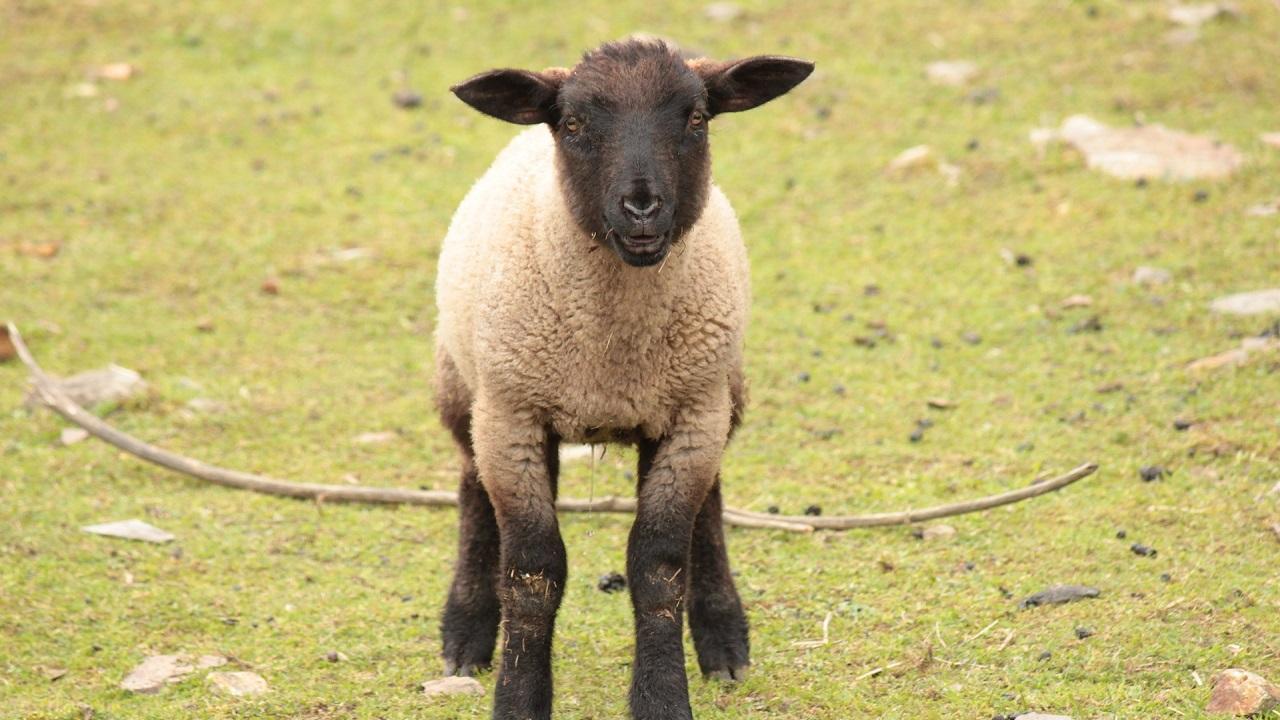
Ovine hereditary chondrodysplasia (Spider Lamb Syndrome)
What is Spider Lamb Syndrome?
Takeaways
- Spider Lamb Syndrome is an inherited disorder associated with severe skeletal deformities in sheep.
- Affected animals may exhibit abnormal spines and long, splayed, “spider-like” legs.
- Spider lambs often have trouble nursing and do not survive beyond 6 months of age.
- A causative mutation has been identified and a genetic test is available so breeders can identify carriers and avoid producing affected lambs.
*Download a printable version of this article here.
Ovine hereditary chondrodysplasia, commonly referred to as Spider Lamb Syndrome, is a recessive inherited disorder associated with severe skeletal deformities caused by abnormal bone and cartilage growth in young sheep. A genetic mutation was identified in a gene that is known to regulate bone growth and the differentiation of cartilage into bone during development. The disorder is primarily observed in black-faced sheep breeds including Suffolks and Hampshires, as well as crossbreeds.
Affected lambs have two copies of the disease causing mutation (homozygous) and exhibit facial defects, abnormal spines, long, bent and/or splayed, “spider-like” legs, flattened ribs, a lack of body fat, and underdeveloped musculature. As a result, they often have trouble standing to nurse and difficulty walking. Many do not survive beyond 6 months of age. The deformities associated with this condition are not always apparent at birth, but often become visible by 4-6 weeks of age.
Lambs born with one copy of the causative mutation (heterozygous, also known as carrier) are slightly taller than sheep with two copies (homozygous) of the unaffected allele, but there is no difference in body weight. Carriers often go undetected until an affected offspring is produced.
This disorder can result in significant economic losses for the sheep industry, but the implementation of genetic testing has greatly reduced the frequency of the causative allele in the U.S. sheep population.
What are the clinical signs of Spider Lamb Syndrome?
The clinical presentation of Spider Lamb Syndrome can be highly varied. Affected lambs may be stillborn or aborted, but most are born alive and exhibit various skeletal deformities. These include twisted or bent spines, disproportionately long legs, long necks, splayed legs or “knock-knees”, and flattened ribs. Limb deformities are often more severe in the front limbs compared to the hind limbs. Some lambs have facial deformities such as a Roman nose, deviated nasal septum, and shortened jawbone. The skeletal deformities become progressively more severe with age and lambs that live to a few months of age develop severe degenerative joint disease.
How is Spider Lamb Syndrome diagnosed?
Based on clinical signs, Spider Lamb Syndrome should be differentiated from arthrogryposis-hydranencephaly, as these two diseases can look similar in some cases. A diagnosis can be confirmed through genetic testing for the known causative mutation of spider lamb syndrome. X-rays often show characteristic features such as irregularly sized and asymmetric bones that form the sternum (sternebrae). Histologically, the long bones of the limbs and the vertebrae show uneven cartilage growth.
How is Spider Lamb Syndrome treated?
There is no treatment for Spider Lamb Syndrome.
What is the prognosis for Spider Lamb Syndrome?
The prognosis for Spider Lamb Syndrome is poor. Most affected animals are euthanized for humane reasons.
How can Spider Lamb Syndrome be prevented?
Spider Lamb Syndrome is caused by a mutation in the fibroblast growth factor receptor 3 (FGFR3) gene. Breeders can prevent Spider Lamb Syndrome in their sheep by performing DNA testing for this mutation on breeding stock and avoiding matings between two carriers (animals with one copy of the causative mutation). Hair samples (20-30 hairs with roots) can be submitted to the UC Davis Veterinary Genetics Laboratory. Offspring of two carriers have a 25% chance of being affected. Breeding an unaffected animal with no copies of the causative mutation to a carrier will not result in an affected lamb but will produce a carrier 50% of the time.
For more information:
UC Davis Veterinary Genetics Laboratory, Spider Lamb Syndrome genetic testing
